- Home
- Rick Mofina
Vengeance Road Page 3
Vengeance Road Read online
Page 3
Not long after they got Bernice, Raife started gambling, and drinking. He became violent and abused Bernice and Catherine before she left him.
“I’ll spend my life regretting that I didn’t do more to protect her.”
Catherine considered her glass then sipped from it.
“She was such a bright girl. Always reading. I was so pleased when she left home to get her own apartment and start college. So proud. She was on her way. She volunteered at a hospice in Niagara Falls. I just knew she was going to make it. Then the bad thing happened.”
“Her friends told me about the party.”
“They think someone slipped something in her drink. She never overcame it. She turned to drugs to deal with it. She wouldn’t talk to me or anyone, but I heard that when she ran up drug debts, she turned to the street.”
Tears rolled down Catherine’s face.
“When was the last time you saw, or talked, to her?”
Catherine wiped her tears and sipped from her glass.
“She called me about a month ago and said she was going to try to get clean, try to get off the street. Some friends were trying to help her.”
“Did she say who those friends were?”
Catherine shook her head.
“You can’t print anything I’ve just told you.”
“But I’m researching your daughter’s death for a news story. I have to.”
“No. You can’t print anything.”
“Catherine, I identified myself as a reporter. I’ve been taking notes. This tragedy is already public. Now, did Bernice say anything about anyone possibly harming her?”
“I’m not supposed to say anything. They told me not to talk to the press.”
“Who?”
Catherine stood.
“Please, you can’t print anything. You have to go.”
“Wait, who told you not to say anything?”
Several moments passed.
“At least tell me who told you not to speak to the press about your daughter’s murder.”
She looked at him long and hard.
“The police.”
5
Two days after her corpse had been identified, Bernice Hogan’s shy smile haunted Gannon from the Sentinel’s front page.
Her picture ran under the headline:
Murder of a brokenhearted woman
Nursing student’s tragic path
Here was a troubled young woman whose life held promise. A woman who, despite the cruelty she’d endured, had been striving to devote herself to comforting others. His compassionate profile was longer than his earlier news stories and contained information unknown to most people, including his competition.
Not bad, he thought, sitting at his desk, rereading his feature in that morning’s print and online editions.
Tim Derrick swung by, drinking coffee from a mug bearing the paper’s logo.
“Nate likes what you did,” Derrick indicated the corner office of Nate Fowler, the paper’s managing editor, the man who controlled the lives of seventy-five people in editorial. Invoking his name gave currency to any instructions as quickly as it made people uneasy.
Fowler was not a journalist. He was a Machiavellian bureaucrat and Gannon did not mesh with him as well as he did with the other editors.
“Did he say anything else?” Gannon asked.
“He wants you to stay exclusively on the murder story, do whatever you can to make sure we own it. He said we need hits like this to boost circulation and stay alive.” Derrick pointed his finger gunlike at Gannon’s old Pulitzer-nominated clips and winked. “And if anyone’s going to take it to the end zone, it’s you.”
Gannon was not so optimistic.
He needed a strong follow-up today but faced a problem.
The New York State Police led the Hogan investigation and he didn’t know the lead detectives. He looked at their names on the last news release, Investigators Michael Brent and Roxanne Esko.
He’d put in calls to them but none were returned. He could go around them, but it meant asking sources to go out on a limb by leaking information to him.
He had sources everywhere: the Buffalo homicide squad, Erie County, Amherst, Cheektowaga, the FBI, Customs and Border Protection, the DEA, the U.S. Marshals Service, pretty much every agency in the region.
But nobody was saying much.
Maybe it went back to what Catherine Field had said about the police telling her not to speak to the press. At first he hadn’t been concerned because detectives often asked relatives of victims not to speak to reporters, especially during the early days of an investigation.
But now, as he sat at his computer searching for a new angle, he wondered if it was a factor here. He couldn’t shake the feeling he was missing something.
“That Hogan case is sealed, man,” one source had told him. “But I heard that some of the people close to it were rattled by what the guy had done to her. I heard that it pushes the limits of comprehension.”
Another source said that a number of law enforcement agencies were called in to help, possibly because of the area where she was found, and possibly because of other complications.
“I’ll tell you something nobody in the press knows,” the source said. “There’s a closed-door case-status meeting with a lot of cops from a lot of jurisdictions. It’s been going on all morning out at Clarence Barracks.”
Gannon grabbed his jacket.
He’d go out there and see if anyone would talk to him.
The New York State Police patrol east and northeast Erie County from the drowsy suburb of Clarence, east of Buffalo. Clarence Barracks was on Main Street, housed in a plain one-story building.
When Gannon arrived, the woman at the reception desk was twirling her pen and talking on the phone.
“I’ve been temping all week, just when they get this big case…meeting after meeting, people coming, people going—one second, Charlene.” She clamped her hand over the phone. “May I help you?”
“I’d like to see Michael Brent or Roxanne Esko. I’m with the Buffalo—”
“They’re all in the meeting, third door on the right.” She pointed down the hall with her pen. “I’m supposed to send everybody there.” She went back to her conversation. “What’s that? She’s pregnant! OH MY GOD! How many is that now?”
“But I’m with the Buffalo Sentinel.”
Ignoring what he’d said, the receptionist pointed him down the hall.
“Go,” she told Gannon. “It’s all right. Everybody’s in the meeting.”
He hesitated for as long as it took the receptionist to buzz him through the security door. As he went down the hall he could almost hear the floor cracking under him for he was treading on thin ethical ice. Through innocent circumstance he’d gained entrance to the inner sanctum of the investigation of Bernice Hogan’s murder. The door to the meeting was half-open. He could hear loud voices.
How should he play this?
He’d knock on the door, identify himself then request to speak to Brent or Esko. They’d likely shoo him away, have him wait at reception.
At that instant the door opened and a man he didn’t recognize exited, talking on his cell phone. Gannon turned and bent over a water fountain as the man, his tie loosened, shirtsleeves rolled up, whisked by him to the opposite end of the hall talking loudly on his cell.
“Tell Walt this Hogan thing is going to be a ballbuster,” he said into the phone. “No one will believe where they’re going with it. Yeah, they’re keeping a tight lid on this. Yeah, I got to get back.”
The man returned to the room and Gannon inched closer to the door.
It remained partially opened. Voices of people arguing spilled from it.
“I don’t buy it.”
“Look at what we know so far.”
“What you have so far is hearsay, Mike!”
Gannon’s breathing quickened. As he inched closer he got a limited view of a large whiteboard. He glimpsed a patch of handwritt
en times, dates, streets, arrows, then a clear view of initials written in blue marker under the heading “Suspect.” The initials on the board were blocked by an open hand slapping it to stress the point someone was making.
“Given all that we’ve got so far, all that we’re following up with, this guy is our suspect and the focus of our investigation.”
The hand vanished.
Gannon’s heart beat faster as he glanced around to be sure no one could see him. He stepped closer and saw the initials of the suspect.
K.S.
Who was that?
“It’s bullshit, Mike, I’m telling you!”
For an instant Gannon caught sight of someone he knew.
“How can you be so sure? We just don’t buy it.”
“It’s not a done deal. Listen, we’ve got a lot of hard work ahead of us, but based on what we’ve got, everything points to him. He’s the key.”
“Let’s see if I have this right. Based on the things a couple of crack hoes on Niagara told you, you’re telling us that a cop, a decorated detective, is your suspect for Hogan?”
A cop?
Gannon froze.
Then he felt a hand on his shoulder.
6
Gannon turned around to see the receptionist’s puzzled face.
“Aren’t you going to go in?” she asked, holding a stack of files she appeared to be delivering.
“No, I was just leaving.” He kept his voice down as he walked to the door. “I have to go.”
“Well, I forgot to have you sign in,” she said. “But if you’re done I guess it doesn’t matter.”
Gannon waved his thanks, headed to his car, hurrying when he got to the lot. He pulled away, a thousand concerns shotgunning through his mind as he struggled to concentrate on what he’d heard.
A detective was the prime suspect in Bernice Hogan’s murder.
This was big. Huge.
He wouldn’t alert the desk yet, not until he nailed it. He had to keep this to himself until he had it in the bag.
Never oversell a story.
First things first.
He had to confirm the name behind K.S. and the police department the suspect worked for. He had an idea and drove downtown to the headquarters of the Buffalo and Erie County Public Library system. The building took up two city blocks in Lafayette Square.
He went to the public computer terminals and logged into the databases for the city of Buffalo employee listings by department. The Buffalo Police Department was the area’s largest police force.
Let’s start here, he thought as he began searching the BPD’s directory for all officers whose surname started with an S.
Damn.
They were not ordered alphabetically but rather by seniority. With more than eight hundred officers to check, this would take time. Page after page of names blurred before he found a K.S.
Ken Smith. Then another. Kim Sailor. Then another. Kent Sanders. And another. Kevin Sydowski.
By the time he was done, he’d mined nine possibilities from the Buffalo Police Department. He moved on to the database for officers with the Erie County Sheriff’s Office. After searching some four hundred names there, he had three more candidates: Kal Seroudie, Kyle Sawchuk, and Keen Sanchez.
But there were numerous police departments that served greater Buffalo, like the Cheektowaga Police Department, the Amherst Police Department, Hamburg, North Tonawanda, West Seneca, and Ascension Park, to name a few.
He continued scouring the databases.
As time passed he realized that he would never get through them all. He stopped to think. So far, he had some sixteen possibilities, but this was turning out to be a needle-in-a-haystack search.
He needed help confirming the name.
He’d use another option.
He abandoned the computer, went to a public telephone and called the private number of the person he’d seen at the meeting. He hadn’t talked to his source for some time and was reluctant to push, but the stakes were high.
No one answered.
He left a message then returned to the newsroom, which was in full midday mode with reporters talking on phones, or typing at keyboards, or huddled with editors discussing stories. Gannon had grabbed a BLT in the cafeteria and was threading his way to his desk.
“Hey, Jack, what’ve you got?” Tim Derrick held up his clipboard listing the stories for tomorrow’s paper. “I’m heading into the meeting. I’ve got you skedded for a follow-up on the investigation into Hogan.”
“I’m expecting more information. I’ll let you know if it falls through.”
“Remember, Nate’s counting on you for a scoop.”
As Gannon settled in at his desk and prepared to eat his late lunch, his phone rang. He answered after getting two quick bites down.
“Jack Gannon, Buffalo Sentinel.”
“I got your message.”
The caller’s number was blocked but he knew the voice.
“Thanks. It’s been a while,” he said. “How are you?”
“Oh, you know me. Same old same old. And you?”
“I’m a bit under the gun. I need a favour,” he said.
“Something to do with Hogan?”
“I understand they’re looking at a cop for it?”
Silence hissed in his ear.
“Why ask me?” the caller asked.
“I figured you might know something. I’m poking around everywhere.”
Another stretch of silence passed.
“Listen,” Gannon said, “I need to confirm what I’ve learned. I think the suspect’s initial’s are K.S. and I need to clarify some details.”
After considering the situation, the caller said, “Jack, you have to guarantee that you will protect the source of this information.”
“You have my word.”
“You don’t give my name to anyone.”
“That’s right.”
“It’s true. Your information is solid.”
He stared at nothing. His breathing quickened.
“And this is from inside the investigation?” Gannon asked.
“Absolutely. I was at a case meeting today.”
“Who’s the cop?”
“A detective with the Ascension Park Police Department.”
“Got a name for me?”
“Karl Styebeck.”
Gannon thumbed the cap off of his pen, found a fresh page in his notebook and started writing, oblivious to the newsroom activity.
Styebeck.
“I’ve heard his name before,” Gannon said.
“Check your archives, he’s some kind of hero.”
“You’re absolutely sure we can go with this in the paper?”
“Dead certain.”
“Thank you.”
Pen clamped between his teeth, Gannon launched into a search of the Sentinel’s news databases, the archives of every community newspaper in the region, the Web site of the Ascension Park Police Department and various community sites online.
Soon, he had enough from community papers for a short biography.
Karl Styebeck was a decorated twelve-year veteran who coached children’s sports teams, volunteered for charity runs and gave stranger-awareness talks in Ascension Park schools. On Sundays, he went to church with his wife, Alice, and their son, Taylor. Occasionally, he sang in the choir.
This guy’s a saint.
Several years back Styebeck was off duty, returning from a Bills game, when he came upon a house fire. He’d rushed into the burning building and rescued four children. They’d been left alone by their parents who’d gone to a casino at the Falls. For his bravery, Styebeck was awarded a Chief’s Citation.
Now he’s suspected of murdering a nursing student.
Gannon had to confirm his information with the state police.
He called Clarence Barracks and asked them to convey an urgent message to Michael Brent, the lead investigator.
“What does this concern?” the duty trooper asked.<
br />
“Information about the Hogan homicide.”
“I’ll pass your message to him.”
Five minutes later, Gannon’s line rang.
“This is Mike Brent, New York State Police.”
“Thanks for getting back to me. Sir, I’m seeking your reaction for a story we’re preparing for tomorrow’s Sentinel that will report that Detective Karl Styebeck, of the Ascension Park Police Department, is the suspect in the murder of Bernice Hogan.”
Brent let several moments of icy silence pass.
“I cannot confirm your information,” Brent said.
“Is my information wrong?”
Silence.
“I would hold off writing anything like that and save yourself a lot of grief.”
“What? I’m sorry, I don’t understand.”
“I can’t confirm your information.”
“But you don’t deny it?”
“I think we’re done here.”
“Sir, you have not denied the information that Styebeck is a suspect.”
Brent hung up.
Gannon circled the few notes he’d taken from Brent and weighed matters. Brent wouldn’t have warned him to hold off if his information was wrong. Because if it was wrong Brent wouldn’t have cared, which told Gannon that his information had to be dead on the money.
No way was he going to sit on a story this big and risk letting the Buffalo News scoop him.
There was only one more person to confront with the story.
Karl Styebeck.
7
Karl Styebeck’s address and phone number were not listed, a step most cops took to protect their families.
Gannon had a hunch.
After he finished eating his sandwich, he picked up his phone and punched an internal extension.
“Circulation, Ashley speaking.”
“Hi, Ash. It’s Jack in news.”
“Jack Gannon?”
He’d dated Ashley Rowe a few times after meeting her at the paper’s Christmas party. They got along but they didn’t think it would go anywhere. They’d parted as friends, or so he thought.

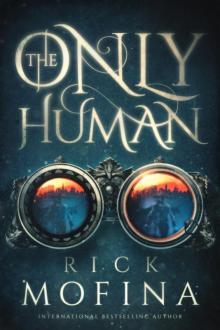 The Only Human
The Only Human Tom Reed Thriller Series
Tom Reed Thriller Series![[Tom Reed and Walt Sydowski 04.0] No Way Back Read online](http://i1.bookreadfree.com/05/tom_reed_and_walt_sydowski_04_0_no_way_back_preview.jpg) [Tom Reed and Walt Sydowski 04.0] No Way Back
[Tom Reed and Walt Sydowski 04.0] No Way Back Missing Daughter
Missing Daughter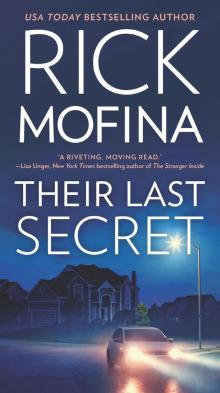 Their Last Secret
Their Last Secret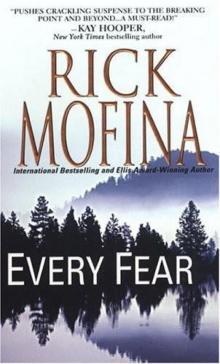 Jason Wade - 02 - Every Fear
Jason Wade - 02 - Every Fear In Desperation
In Desperation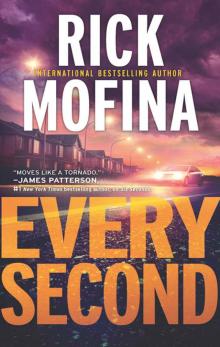 Every Second
Every Second Full Tilt
Full Tilt Search for Her
Search for Her The Last Pursuit
The Last Pursuit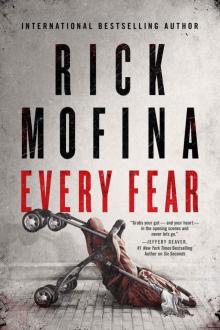 Every Fear
Every Fear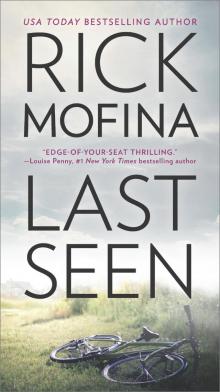 Last Seen
Last Seen The Panic Zone
The Panic Zone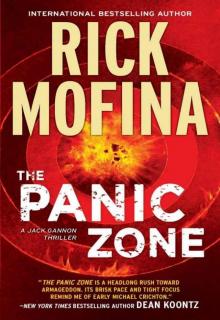 The Panic Zone jg-2
The Panic Zone jg-2 Free Fall
Free Fall Blood of Others
Blood of Others![[Jason Wade 02.0] Every Fear Read online](http://i1.bookreadfree.com/i1/03/31/jason_wade_02_0_every_fear_preview.jpg) [Jason Wade 02.0] Every Fear
[Jason Wade 02.0] Every Fear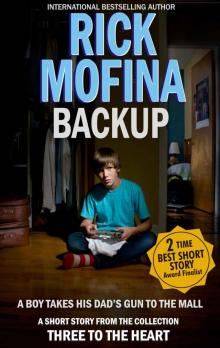 Backup
Backup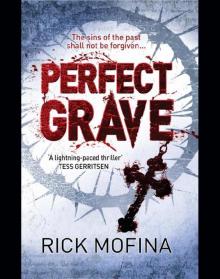 Perfect Grave
Perfect Grave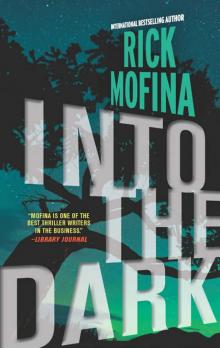 Into the Dark
Into the Dark Whirlwind
Whirlwind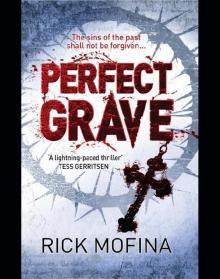 Perfect Grave jw-3
Perfect Grave jw-3 If Angels Fall (tom reed and walt sydowski)
If Angels Fall (tom reed and walt sydowski) Six Seconds
Six Seconds If Angels Fall
If Angels Fall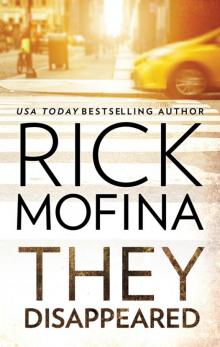 They Disappeared
They Disappeared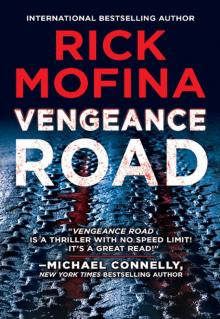 Vengeance Road
Vengeance Road Before Sunrise
Before Sunrise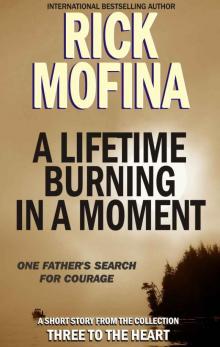 A Lifetime Burning in a Moment
A Lifetime Burning in a Moment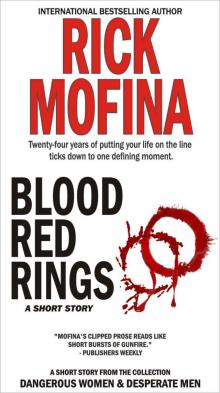 Blood Red Rings (Dangerous Women & Desperate Men)
Blood Red Rings (Dangerous Women & Desperate Men) As Long As We Both Shall Live (Dangerous Women & Desperate Men)
As Long As We Both Shall Live (Dangerous Women & Desperate Men)![[Tom Reed and Walt Sydowski 01.0] If Angels Fall Read online](http://i1.bookreadfree.com/i2/04/12/tom_reed_and_walt_sydowski_01_0_if_angels_fall_preview.jpg) [Tom Reed and Walt Sydowski 01.0] If Angels Fall
[Tom Reed and Walt Sydowski 01.0] If Angels Fall Cold Fear
Cold Fear Be Mine
Be Mine Three Bullets To Queensland
Three Bullets To Queensland